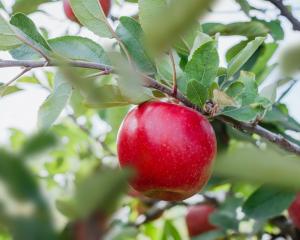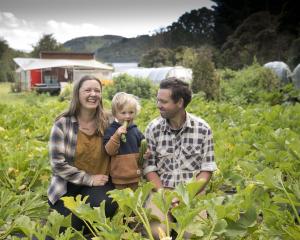
Growers will feel effect of reduced milk payout
Two quick payout cuts in succession for reeling dairy farmers are expected to flow down to lower prices for arable growers as well.
The demand for feed wheat and feed barley grain is likely to taper off as dairy farmers trim budgets to reduce expenses in the face of a lower forecast for Fonterra’s milk payout. This has shrunk to a midpoint of $6.75 a kilogram of milksolids after a revised August 18 forecast followed another cut two weeks earlier.
Arable farmers are reacting by rethinking some of their spring sowing, but remain limited by crop rotations.
Federated Farmers Arable’ grains vice-president Andrew Darling said the impacts of cuts to forecasted milk payments to the nation’s 12,000 dairy farms would ripple across the wider economy, including the arable sector.
"Dairy farmers are looking pretty hard at their costs on farm so they’re reducing some of that imported feed on their farm. Generally, we’ve got full silos now or getting filled at the start of milking so the grain is moving pretty slowly and prices for some of that free grain too are dwindling down pretty quickly because, unfortunately, our feed price is dictated a bit by what the dairy payout is and their need to buy."
The Arable Industry Marketing Initiative’s (AIMI) July survey shows 58% of sold feed wheat grain is still being stored on arable farms.
Mr Darling said dairy farmers were probably reluctant to have full silos just yet, but they would be starting to move soon as cows started milking and feeding started in dairy sheds.
Much of this would be under a good contract price for growers, but it was unlikely that dairy farmers would renege on contracts, he said.
"We would hope not, as this stuff is done on a proper contract. There may be some handshake deals out there that’s not a true contract, but a binding contract should be fine."
He said feed grain also went into the pig and poultry market, but a lot of domestic grain tended to go to dairy.
"The biggest thing is our cost of production is also going up as well. Even though we’ve had some reduction in our fertiliser prices, other things like interest rates, insurance and those things are still creeping up so we still have to be careful we’re being profitable and getting good value for the product we are producing too, otherwise we won’t be making money."
It was questionable whether grain prices reaching more than $600 a tonne as a result of world impacts would remain.
Two-thirds of the estimated 289,100 tonnes of feed barley harvested has been sold and 38% of that grain is still stored on farms. The 97,000 tonnes of unsold feed barley was higher than the previous July’s 59,300 tonnes.

Malting barley sowings either in the ground, or intended to be, are up 77% on the 2023 harvest, albeit on a small growing base compared with other crops.
Mr Darling said the AIMI report showed malting barley plantings for breweries was up 7000ha on last year as a result of good contracts.
"The way the dairy payout is and the feed barley market is the guys are probably switching to a bit more malting now."
He said growers had some room to still tweak rotations by switching varieties from feed to malting barley.
Finishing lambs weren’t as attractive an option for arable farmers as before, he said.
Mr Darling said there was probably still a market for feed grain in the North Island for pig, poultry and dairy markets, as the local grain was back from heavy rainfall and flooding.
"But it’s hard to transport South Island grain up there at a reasonable price, especially in competition with Australian grain," he said.
Overall, harvest data showed yields were up 6% over the six malting/milling and feed crops and the area harvested, 96,022ha, was similar to last year for a 7% increase in total tonnage.
Milling wheat yields were up 4%, malting barley up 6%, milling oats up 15% and feed oats down 2% compared with last season. Feed wheat yields were up an estimated 1% and feed barley yields up 11%.
The estimated 2023 final tonnage of milling wheat at 113,700 tonnes, is up 44% compared with last year’s harvest.
Mr Darling said growers knew this was coming, as the weather was poor last year.
The 26,700 tonnes of milling wheat yet to be sold in July was higher than last year’s 15,500 tonnes.
Canterbury growers have found most autumn crops have established well after plenty of winter rain.
North Island and Southland growers are looking forward to better spring conditions after a wet autumn and winter.

Dairy budgets under pressure
South Canterbury farmers are slashing dairy farm budgets in an attempt to avoid a loss after back-to-back Fonterra payout cuts.
Those carrying higher debt will struggle to break even and face an unprofitable year of work ahead of them.
Last season’s farm-gate milk price of $9.30 a kilogram of milksolids is a distant memory, as is the opening forecast initially set last year for this season of $8.50/kg to $10/kg, for a $9.25/kg midpoint.
Further cuts this month pared the forecast back to a range of $6/kg to $7.50/kg for a midpoint of $6.75/kg.
Federated Farmers South Canterbury Dairy chairman Ad Hendriks said a payout at this level would be tough on farmers riding out a high inflation environment and the outlook "wasn’t going to be pretty".
"Farmers that won’t have a mortgage, they might just break even, and anyone with a mortgage is pretty much going backwards."
He said the last time dairy farmers were in this position was when the payout dropped from above $8/kg to $4-something in 2014-15, when Europe farmers produced more milk after quotas were lifted.
"It’s pretty much a similar situation now, although we do have a $6.75/kg payout and it’s almost break-even. If it comes out on the high end of the prediction that Fonterra did it might be still OK, but at the moment there’s not much sign on the horizon that tells us it’s going to go that way until China comes back into the market. It’s probably more a demand issue than a supply issue 10 years ago."
He said farmers were stopping spending on anything they could, such as fertiliser — or putting less on — and any capital expenditure on new tractors and machinery that needed replacing.

"I’m just making a new garage for our staff and if I would have known the payout would go down a month or three ago I never would have started this process and left it to next year. But you can’t stop a building half up."
Mr Hendriks said people with an average mortgage would struggle on DairyNZ’s predicted $7.51/kg break-even point.
"I’ve got a mortgage like most farmers and $7.50/kg would probably break it about even."
He said high farm costs such as interest rates and fuel prices were making it tough when combined with low commodity prices.
Farmers might appear to be making a lot of "noise" and complaining for themselves about the challenging season, but it was an indication of what was going to happen for buyers of dairy products.
"Any cost that gets added on to what we have to pay, like compliance costs, higher tax rate, for fuel, higher interest rates and carbon emissions, if that becomes too painful for farmers they will stop producing and when you stop production and demand stays the same eventually the price goes up for the people on the floor level that buy the produce in the supermarkets."
He said South Canterbury farmers were reasonably well off for feed on farms from a mild winter and might save on import feed costs.
Fonterra share and unit holders also looked like they would come out with a reasonable dividend from value-add business and a capital return from the sale of its Chilean Soprole business to Gloria Foods, but the milk price was the most important income.
Tax bills would be lower from less income and the Government could count on less money coming from the dairy industry, he said.














